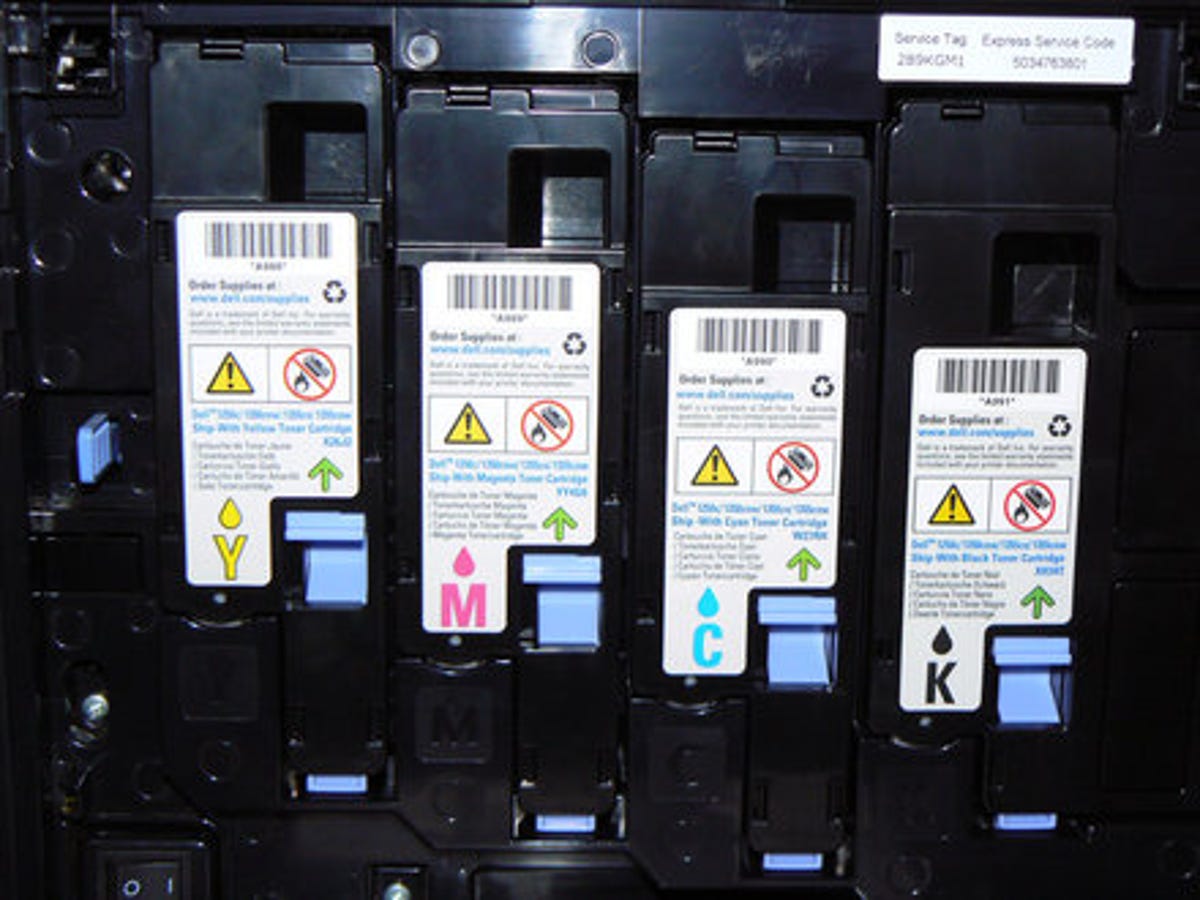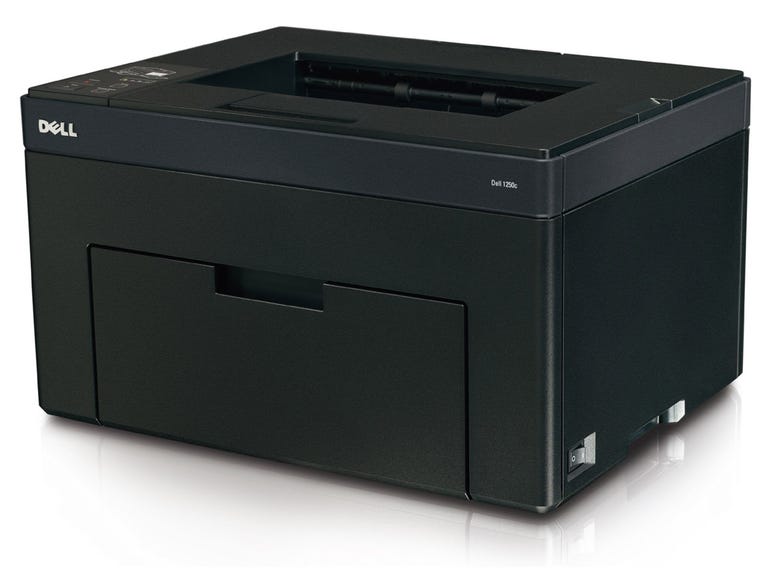 Why You Can Trust CNET
Why You Can Trust CNET Dell 1250c review: Dell 1250c
The Dell 1250c colour laser printer impresses with its excellent print quality, and its small size will make it popular among those who are short on space. It's slow, though, and its running costs are relatively high.
At around £100, the Dell 1250c is one of the cheapest colour laser printers that you can buy. It's also very compact for a colour model and, as a result, is likely to be an attractive option for those with small home offices.
The Good
The Bad
The Bottom Line
Print technology
The 1250c isn't actually a laser printer as such, because, instead of using a scanning laser, it relies on high-intensity LEDs to etch the image being printed onto the toner drum. This makes the printer cheaper to produce, as there are less moving parts. It may also help to make the printer more reliable in the long term.
Another advantage of LED technology is that it allows manufacturers to reduce the size of their printers. Indeed, the 1250c is very small for a colour model. In fact, it's not much larger than Dell's 1130 monochrome laser printer, so it'll fit comfortably on most office desks.
As with Dell's other budget printers, this one doesn't have an LCD display, but instead makes do with a number of status lights. These are used to indicate when the toner is low in each of the four cartridges, as well as draw your attention to general errors. The control panel also makes do with just two buttons -- a start button and a cancel button. Still, the printer driver includes a software control panel, so you can use that to get more information about any errors that do crop up.
Unlike most laser partners, this one doesn't have a paper tray that slots into the bottom of the machine. Instead the tray folds down and protrudes out from the bottom of the chassis when it's filled with A4 paper. This is a less elegant solution and means the printer's working footprint is slightly larger than you might expect.

The tray accepts up to 150 sheets, which is lower than the usual capacity of 250 sheets. The results are dumped into a recessed tray at the top of the printer.
Set-up
The 1250c is a breeze to get working with your computer. As there's no Wi-Fi or Ethernet connectivity, you can only connect it to your PC via USB. The installation CD includes a video set-up guide, so you really can't go far wrong.
This model relies on four toner cartridges that are stored in slots hidden behind a flip-down panel on the right-hand side. These slot into place very easily, so replacing toner cartridges is a quick and simple job. As the drum isn't replaceable, but is instead designed to last for the entire life of the printer, the toner cartridges are the only consumables you'll need to deal with.
Print costs, speed and quality
There are normal and high-capacity versions of the cartridges. The high-capacity black version delivers 2,000 pages, while the high-capacity colour cartridges are good for 1,400 pages. Using these cartridges, a black and white page works out at 4.1p per page and a colour one at 15.6p per page, including 0.7p for paper costs. That's quite expensive, especially in terms of colour printing. The running costs of Brother's HL-3040CN are slightly lower.
The 1250c isn't exactly the fastest printer around, either. It takes a long time to actually start churning pages out, which is an issue if you're only printing a couple of pages at a time. It took a rather leisurely 1 minute and 27 seconds to produce our ten-page black and white text document, and 1 minute and 28 seconds to produce a colour version of the same document. It worked on our ten-page colour business presentation for 2 minutes and 13 seconds, and was even slower to muster up ten pages of our colour graphics test sheet, taking a full 2 minutes and 17 seconds.
Print quality is very good, though. Our black and white text was pristine, with no bleeding or splattering visible around individual characters on the page. Graphics performance was also first-rate. Large areas of colour were free from banding and colours looked bright and punchy, especially on our graphics test sheet.
Verdict
Overall, the Dell 1250c is a decent colour laser printer. We like its compact size and impressive print quality, but we're less fond of its high running costs and sluggish print speeds. As such, it's probably not the best option for those who need to pump out tonnes of colour pages on a regular basis.
Edited by Charles Kloet


